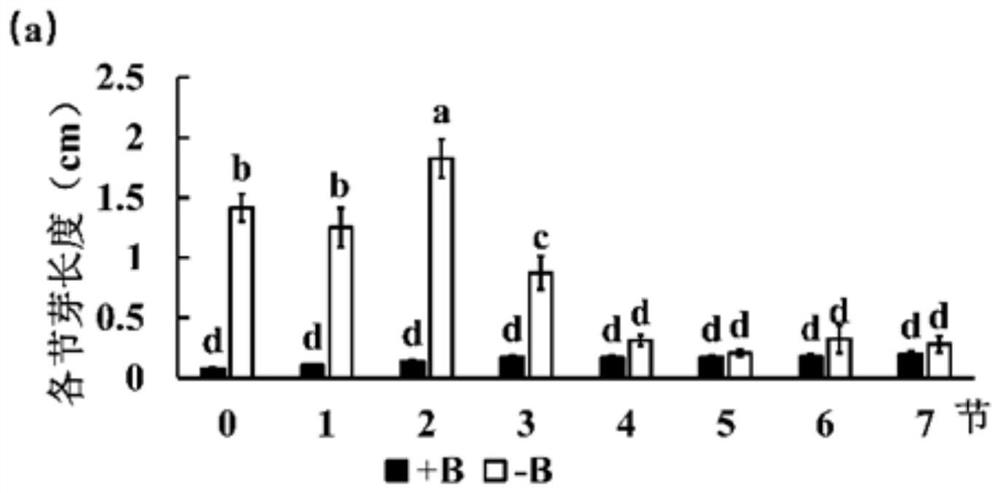Method for evaluating growth condition of peas
A pea and axillary bud technology, applied in the field of assessing the growth of peas, can solve problems such as restricting plant growth and development and intensifying competition
- Summary
- Abstract
- Description
- Claims
- Application Information
AI Technical Summary
Problems solved by technology
Method used
Image
Examples
Embodiment 1
[0022] Example 1: Detection of apical dominance in peas
[0023] After the plants were decapped, the growth of axillary buds was observed and recorded. Scan, record and measure each axillary bud according to the following method.
[0024] (1) Fix the paper with the line drawn on the glass culture dish to make a line drawing board;
[0025] (2) Put the ruler on the scanner and scan it into an image to obtain the ruler picture;
[0026] (3) Cut pea axillary buds from the main stem, and place each section of axillary buds on the line drawing board in the order of the nodes;
[0027] (4) According to the order of the sections, each section of the axillary buds is gradually transferred to the scanner and scanned into an image to obtain a picture of the axillary buds;
[0028] (5) Utilize ImageJ image processing software to process image, specifically:
[0029] A. Run the ImageJ software, open the scale picture, use the straight line tool to select a distance of more than 3cm fr...
Embodiment 2
[0033] Example 2: Evaluation of the effect of boron treatment on pea growth.
[0034] Pea seedlings in the normal boron concentration (25μmol.L -1 ) and a boron-deficient environment for about 3 weeks, according to the above-mentioned method, the axillary buds of the differently treated plants were placed in order of nodes, and the growth conditions were recorded. From figure 2 It can be seen intuitively that the apical dominance of boron-deficient plants is removed, the terminal buds wither, the axillary buds develop, and the reproductive development is inhibited (no flower buds) (in figure 2 Among them, node 0 is the pea cotyledon insertion point, node 1 is the first node, and so on; pea axillary buds are placed in the order of nodes. The measurement and statistics of bud length do not include the flower buds developed after 7 / 8 nodes treated with boron).
[0035] The length of axillary buds at each node was analyzed, and it was found that the differences in the growth ...
PUM
 Login to View More
Login to View More Abstract
Description
Claims
Application Information
 Login to View More
Login to View More - R&D
- Intellectual Property
- Life Sciences
- Materials
- Tech Scout
- Unparalleled Data Quality
- Higher Quality Content
- 60% Fewer Hallucinations
Browse by: Latest US Patents, China's latest patents, Technical Efficacy Thesaurus, Application Domain, Technology Topic, Popular Technical Reports.
© 2025 PatSnap. All rights reserved.Legal|Privacy policy|Modern Slavery Act Transparency Statement|Sitemap|About US| Contact US: help@patsnap.com



